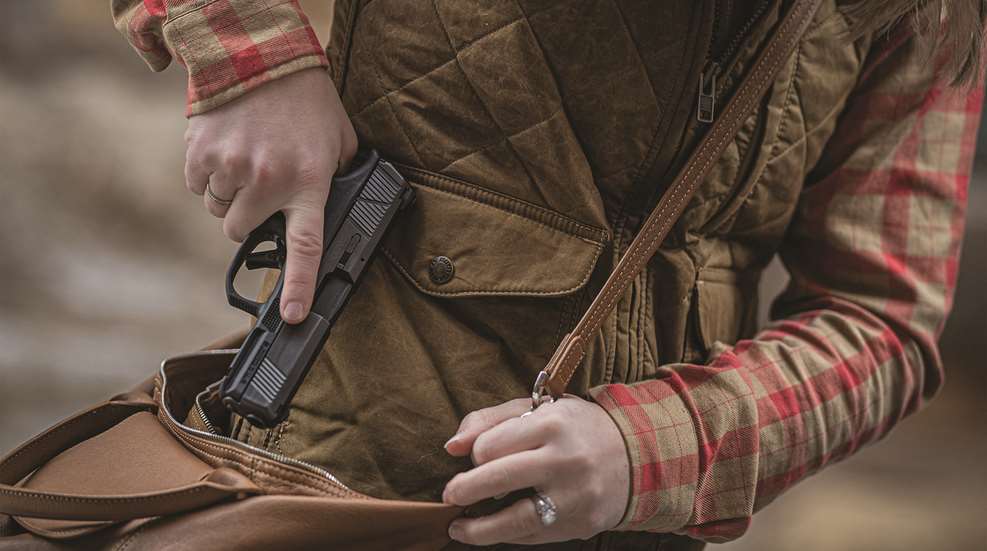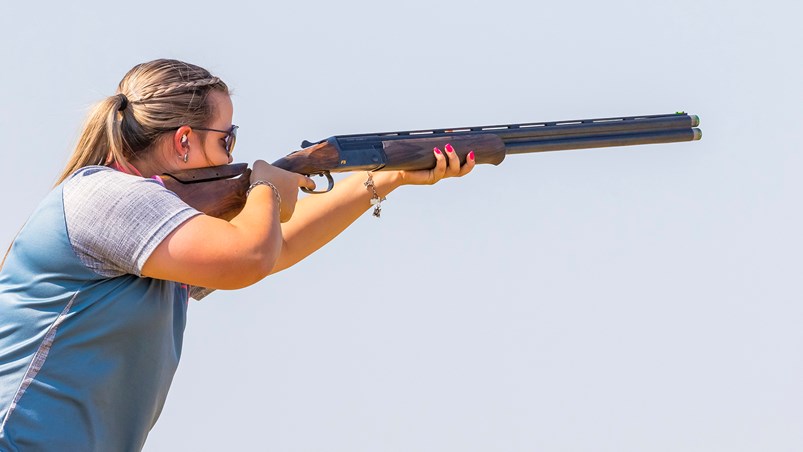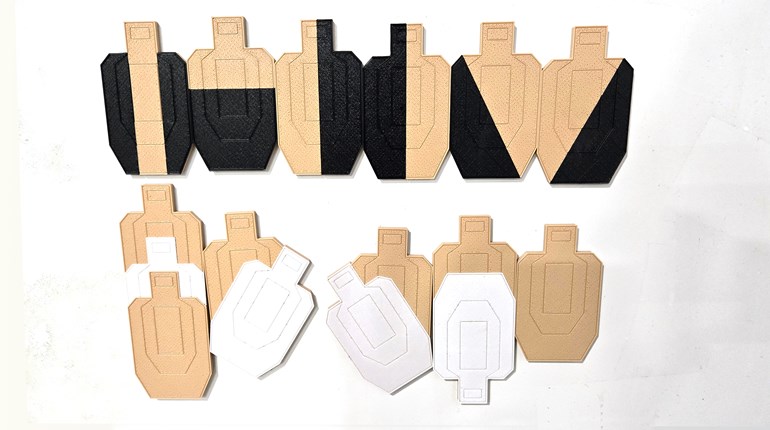
Let’s be real: We can’t always get to the range as much as we’d like. We’re busy! Our weekends are full of other obligations, and ammo isn’t exactly abundant these days anyway. While there’s no real substitute for live-fire training, there are plenty of ways you can train at home—for free.
1. Draw Practice
As long as you’re safe, there’s no such thing as being too quick on the draw. You build up that speed by practicing drawing your gun, and you can do that at home. Unload your handgun, then visually and physically confirm that it’s unloaded. Holster your gun and practice drawing and presenting it to an imaginary target—pick an object in the room to serve as the target—making sure you obtain a good sight picture. Reholster and repeat as many times as you can stand it before you get too bored.
You can and should take draw practice to the next level by wearing the same holster and garment setup you expect to be wearing when it comes time to draw in real life. If you compete, this might mean practicing with your competition pistol in your competition holster, which is probably outside your waistband, with a tucked-in shirt. If you carry concealed, this might mean concealing your unloaded firearm in your everyday holster and wearing normal clothes over it, so that you must practice clearing the clothing before you are able to access the gun. It’s vital that you can do this quickly, and at-home practice will get you ready.

Practicing your gun mount at home is a great way to train when you can’t make it to the range. Photo courtesy of the National Skeet Shooting Association.
2. Mount Practice
If you are a shotgun shooter, gun-mount drills with your unloaded shotgun will be hugely beneficial in strengthening your arms, building a consistent mount and teaching you to control the movement of the gun. Practice looking at your chosen “target” and mounting the unloaded gun to it. Then you can advance to what Gil Ash of OSP Shooting School calls the Three-Bullet Drill, where you’ll see your “target” in your periphery but focus on and mount the gun to a point in front of or behind it. This teaches you the sight picture you’ll see when shooting moving targets with a sustained-lead technique.
When you’ve got that down, move on to OSP’s Flashlight Drill, where you insert a small flashlight into the muzzle of your unloaded shotgun, aim the beam (thus pointing the gun) at a corner of your ceiling, and mount the gun without letting the beam bounce all over the place. Once you master that, move the gun so that the beam traces the line of the ceiling as you mount the gun, simulating mounting a shotgun to shoot a bird that is flying from right to left or left to right.
3. Dry Firing
A smooth, consistent trigger pull is critical for accurate shooting, and you can work on this at home by dry-firing. Triple check that your gun is unloaded, aim it at your chosen imaginary target (in a safe direction), and practice pulling the trigger.
Do not dry-fire a shotgun, an antique firearm or a rimfire rifle or handgun, as it can cause damage to the gun. General consensus is that dry firing won’t harm your centerfire rifle or handgun, but if you are concerned about damage, you can purchase dummy rounds made for this purpose.
When dry-firing at home, concentrate on keeping your sight picture steady while you pull the trigger, and follow-through properly by maintaining the sight picture after the trigger pull. If you’re using a semi-auto, work on resetting the trigger (letting off just enough pressure that you can feel the trigger reset itself; in live fire, this means the gun is ready to fire again without your finger coming all the way off the trigger). Once you feel you’ve got it nailed, try the old trick of balancing a coin on the end of the muzzle and dry firing. If the coin falls, you’re jerking the trigger or at the very least, your pull could be smoother. Keep working at it!
4. Relevant Reading
When it comes to shooting, we learn best by doing—but we can also learn by reading about the knowledge and experience of others. There’s a lot to be learned from books, blogs and magazine articles. When you can’t be at the range, gaining head knowledge from a variety of reputable sources can improve your shooting, your gun handling, your safety and your awareness of all sorts of self-defense concepts.
The self-defense aspect is particularly important, because even with bountiful range time, it’s very difficult to accurately and regularly simulate self-defense scenarios and the psychology surrounding them. Books won’t teach you that either, of course, but they can give you a jumping-off point, make you more aware of the realities you might face, teach you what to look out for, and help you keep self-defense top-of-mind in daily life.
5. Visualization and Mental Exercises
Competitors in the shooting sports frequently engage in visualization. I’ve heard some of the country’s best skeet shooters say that they sometimes walk themselves through an entire round of skeet in their head, visualizing themselves in detail executing every shot on each station. Sporting clays shooters often make visualizing how they plan to break a given target a part of their pre-shot routine just before they call “pull.” You can do this as well, whether you’re going target shooting or hunting or whether you’re mentally walking yourself through self-defense scenarios. Note that competitors aren’t picturing themselves standing on a podium or winning a medal—that’s daydreaming. The visualization is about each physical movement they will make when it’s time to put the vision into action.
Mental exercises are a great way to train your brain, too, particularly as it regards the realities of self-defense. You can read more about the four questions you should ask yourself before you carry a gun in another article, and pay careful attention to the last two questions regarding what you’re really willing to do and where you draw your line in the sand. Take some quiet time at home to contemplate what would truly happen if you ever have to use deadly force in defense of your life or someone else’s. Think about what it would mean and how it would change you if you were forced to take a life in order to save your own. These are heavy, messy questions with ultimately unknowable answers, but it’s important for you to walk through the what-ifs, set up some non-negotiable boundaries, and do some serious introspection so you are prepared before the time comes.















































